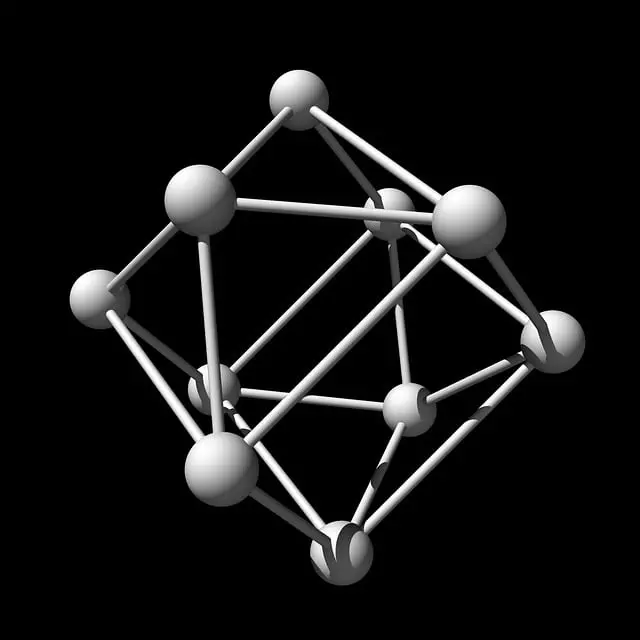Kratom, a plant-based substance from Southeast Asia, has been found to enhance muscle relaxation when combined with meditation, creating a more effective tranquil meditative experience. Its active alkaloids, mitragynine and 7-hydroxymitragynine, interact with opioid receptors to produce a soothing effect that complements the mental clarity required for meditation. This synergy promotes deeper relaxation without impairing mental focus, allowing individuals to better manage stress and achieve a more focused state of mind. Proper dosing is crucial for balancing relaxation with cognitive function to sustain meditation practices. Users often report that this combination helps them maintain presence during their meditative sessions, which can be beneficial for achieving inner stillness and holistic well-being. It's important to note that while Kratom can aid muscle relaxation in the context of meditation, users should approach it with caution, starting with low doses and consulting healthcare professionals to ensure safety and effectiveness, given its variable effects. This integrated approach of using Kratom for muscle relaxation in conjunction with meditation offers a promising holistic method for those looking to alleviate stress-related muscle tension and enhance their meditative experience.
Embark on a journey to harness the transformative effects of meditation, enhanced by the unique properties of Kratom. This article delves into the harmonious interplay between these practices, elucidating how Kratom can potentiate muscle relaxation during meditation. We will guide you through an understanding of Kratom’s mechanisms that contribute to this synergy and offer a detailed approach for incorporating it into your meditative routine for maximum relaxation benefits. Discover the intersection where inner tranquility meets physical ease, all through the lens of Kratom and muscle relaxation.
- Unraveling the Synergy of Meditation and Muscle Relaxation with Kratom
- Exploring the Mechanisms: How Kratom Influences Meditation and Muscle Tension Release
- A Comprehensive Guide to Integrating Kratom into Your Meditation Practice for Optimal Muscle Relaxation
Unraveling the Synergy of Meditation and Muscle Relaxation with Kratom

Meditation, an ancient practice with roots in various cultural traditions, has long been recognized for its capacity to foster mental clarity, emotional well-being, and a profound state of relaxation. When integrated with the use of Kratom, a naturally occurring plant substance, this synergy can significantly enhance muscle relaxation outcomes. Kratom interacts with the body’s opioid receptors, inducing a calming effect that complements meditative practices. This combination not only aids in alleviating physical tension but also creates a conducive environment for deep meditation, where individuals can more easily achieve a state of inner stillness and release mental stressors. The precise dosing of Kratom is crucial to ensure this balance between muscle relaxation and maintaining cognitive function for focused meditation. Users often report an improved ability to stay present during their meditative sessions when using Kratom, attributing this to the plant’s sedative properties that do not overpower the mind. This harmonious interplay between meditation and Kratom can be particularly beneficial for those experiencing muscle tightness or discomfort due to stress, fatigue, or physical exertion, offering a holistic approach to relaxation and mental centering.
Exploring the Mechanisms: How Kratom Influences Meditation and Muscle Tension Release

Kratom, a tropical deciduous tree native to Southeast Asia, has garnered attention for its potential effects on meditation and muscle relaxation. The active compounds found in kratom leaves, primarily mitragynine and 7-hydroxymitragynine, interact with the body’s opioid receptors, which can lead to a modulation of sensory perception and mood. This interaction is thought to contribute to the alleviation of muscle tension, a common physical barrier to deep meditative states. By engaging with kratom prior to meditation, individuals often report an enhanced ability to relax their muscles and focus their minds, facilitating a more profound and uninterrupted meditation experience. The relaxation effect of kratom is not only limited to the mental realm but also extends to the physical, as it has been observed to induce a state of tranquility that complements the inward focus required for effective meditation practices.
The influence of kratom on muscle tension release can be particularly beneficial when combined with meditative techniques. Users who incorporate kratom into their pre-meditation routine may find that it helps them to achieve a more relaxed and receptive state, conducive to the introspective process of meditation. This synergy between kratom’s relaxing properties and the mental clarity sought in meditation can lead to a holistic well-being experience. It is important for individuals to approach the use of kratom with caution, as its effects can vary widely based on dosage, personal physiology, and the strain of kratom consumed. Additionally, it is crucial to consult with healthcare professionals before integrating kratom into any wellness regimen, especially when combined with meditation practices, to ensure safety and optimal outcomes.
A Comprehensive Guide to Integrating Kratom into Your Meditation Practice for Optimal Muscle Relaxation

Incorporating kratom into a meditation practice can offer a synergistic approach to achieving profound muscle relaxation. Kratom, derived from the leaves of the Mitragyna speciosa tree, is known for its alkaloid compounds that interact with the brain’s receptors, potentially leading to sensations of calmness and relief from muscular tension. When preparing to meditate with kratom, it is crucial to start with a low dose to gauge individual sensitivity and to avoid overwhelming effects. The onset of kratom’s influence is typically gradual, allowing for a gentle transition into a state conducive to meditation. As the kratom takes effect, focus on deep, diaphragmatic breathing to enhance its muscle-relaxing properties. This combination of natural compounds and breathwork can significantly heighten the meditative experience, promoting a deeper connection with one’s inner self and facilitating a tranquil state where muscles naturally release their hold.
To fully harness kratom’s potential for muscle relaxation during meditation, it is advisable to select a kratom strain known for its relaxing properties, such as Bali or Indo strains. These strains are often favored for their calming effects. Additionally, creating a serene environment can amplify the experience. Dim the lights, eliminate distractions, and perhaps incorporate gentle background music if it aids in setting a peaceful atmosphere. As you settle into your meditation posture, allow the kratom to work its way through your body, focusing on each muscle group from head to toe, consciously releasing tension as you breathe. This mindful attention to physical sensations can further enhance the muscle-relaxing effects of kratom, leading to a more profound state of relaxation and a meditative journey that is both serene and introspective.
Meditation, a practice steeped in ancient traditions, has found new synergies with contemporary wellness approaches, particularly through the incorporation of kratom. This article has elucidated the intricate mechanisms by which kratom can enhance both meditative states and muscle relaxation, offering readers a nuanced understanding of this integration. By adhering to the guidelines provided for safely and effectively combining kratom with meditation, individuals can harness its potential to ease muscle tension. As a result, practitioners may experience not only the mental clarity and tranquility that meditation offers but also the physical relief associated with relaxed muscles. This holistic approach underscores the multifaceted benefits of kratom in promoting a harmonious balance between mind and body, making it a valuable addition to one’s wellness routine.






